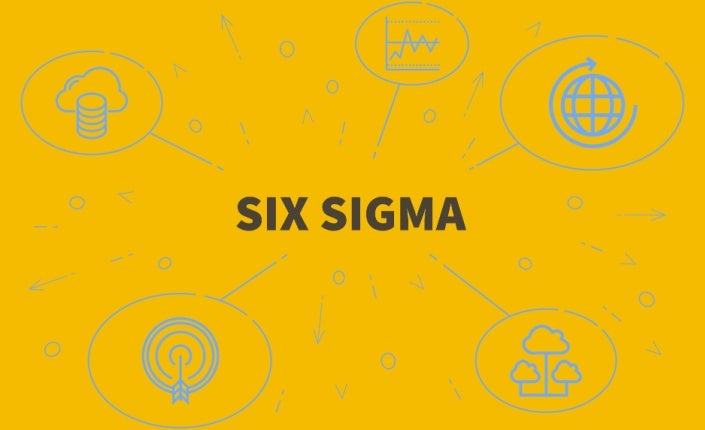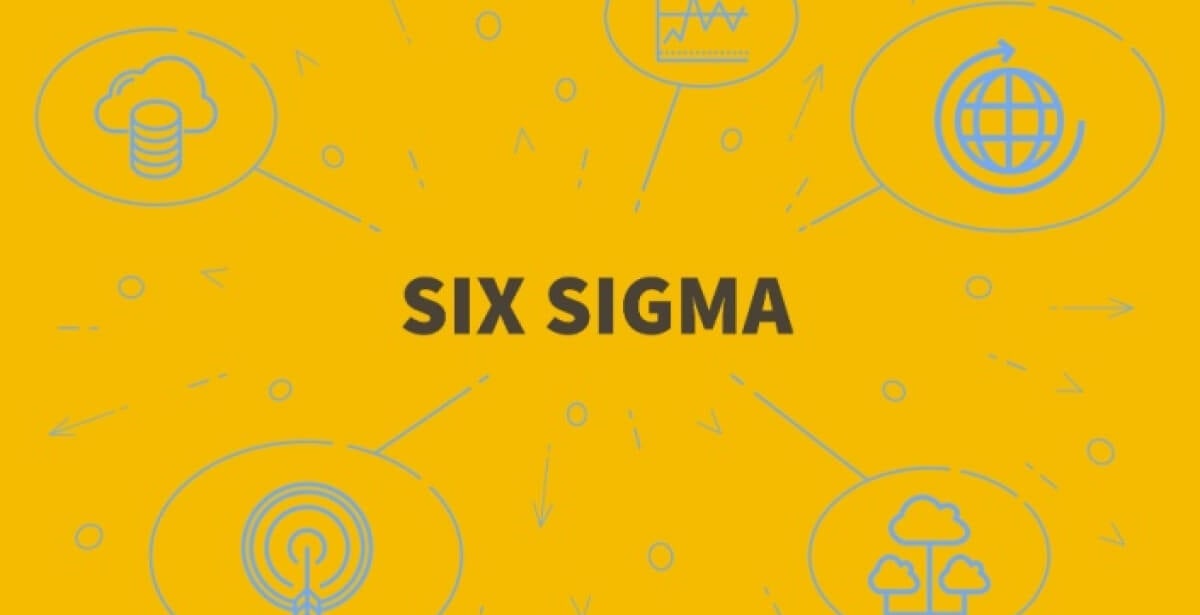
Your Guide to Six Sigma Belts
The Six Sigma methodology evolved as a result of the ever-present need for product quality and productivity. The approach was implemented by Motorola in 1986 as the company sought better performance through predictable processes. Over the past four decades, Six Sigma principles have expanded beyond their origins, notably in the automotive and manufacturing industries.
Project leaders demonstrate their commitment to these principles by earning Six Sigma Belts. Each Belt level is a certification of a specific level of understanding about process improvement. Understanding how Six Sigma and Lean Six Sigma differ is a good starting point when learning about Six Sigma Belts.
Defining Six Sigma and Lean Six Sigma
In statistics, sigma is the symbol used for standard deviation or the variation of values within a dataset. “Six Sigma” refers to a standard where the failure rate is limited to only a rate beyond six deviations or 3.4 defects per million. Every project following Six Sigma principles seeks continuous improvement of processes resulting in high-quality products or services. To meet this standard, project teams trained in Six Sigma use the DMAIC strategy:
- Define the problem and opportunities for improvement
- Measure process functionality
- Analyze for root causes of variation
- Improve performance by eliminating root causes
- Control the revamped process for future success
As Six Sigma grew in influence, the Lean Manufacturing ethos of waste reduction began to incorporate Six Sigma methods. This resulted in Lean Six Sigma, which emphasizes reducing waste and improving process efficiency in manufacturing environments. Lean Six Sigma experts draw on DMAIC and value stream maps of supply chains to achieve these goals.
While there is a significant overlap between both versions of Six Sigma they differ in their approach.
- Six Sigma is a highly structured approach to reducing process variation and increasing performance.
- Lean Six Sigma is a set of managerial principles aimed at eliminating defects and waste.
Types of Six Sigma Belts
The Six Sigma methodology works best when team members hold various levels of certification. Six Sigma Belts - modeled after the belt colors in martial arts - represent distinct levels of accountability and knowledge, each with their role in a well-run business. The following are the commonly accepted Six Sigma Belts, and the knowledge and experience often associated with these Belt certifications:
Yellow Six Sigma Belt – Foundational knowledge of Six Sigma principles, tools, and practice, often entry level employees or those newer to the world of Six Sigma that serve as team members in a more supportive role.
Green Six Sigma Belt – These professionals typically have a few years of Six Sigma experience behind them with a thorough understanding of the DMAIC process (Define, Measure, Analyze, Improve, and Control). They are adept at analyzing and solving quality improvement challenges and both lead and support improvement projects at work.
Black Six Sigma Belt – Well-versed in Six Sigma philosophies and principles, these professionals have a thorough understanding of the DMAIC model and are masters at leading a team in application of process improvement.
Master Black Six Sigma Belt – As leaders in Six Sigma, these professionals have exceptional commitment to current industry knowledge and to the practice and advancement of quality and process improvement.
White Six Sigma Belts are not as regarded because they represent only basic knowledge of Six Sigma.
Benefits of Six Sigma Belts
ASQ’s 2020 Salary Survey found that professionals with any Six Sigma Belt averaged $16,411 more in earnings than those who did not seek certification. The earning increase varied significantly based on Belt level, as shown below:
- Certified Six Sigma Yellow Belt ($880)
- Certified Six Sigma Green Belt ($10,736)
- Certified Six Sigma Black Belt ($15,761)
- Certified Six Sigma Master Black Belt ($26,123)
Earning Six Sigma belts shows your commitment to continuous process improvement as a business professional. A master’s degree focused on Lean principles and Six Sigma concepts further boosts your impact in the workplace. Kettering University’s innovative Master of Science in Lean Manufacturing Online and Master of Science in Lean Systems Online teach students to apply these principles across industries.
Learning Lean Principles at Kettering University
The MS in Lean Manufacturing Online and MS in Lean Systems Online (for those interested in applying lean principles in non-manufacturing industries) go beyond the knowledge required for the Six Sigma Black Belt and Master Black Belt exams. Students complete all their coursework online and leave with more than one project necessary for future Master Black Belt reviews. A 40-credit curriculum taught by experienced faculty covers topics including:
- Lean Production Systems
- Quality Assurance and Reliability
- Six Sigma: Introduction to DMAIC
- Work Analysis for Lean Production Applications
Both degrees include seven core courses and a 3-course certificate, amplifying the value of your graduate degree. Students choose from certificate options including:
- Foundations of Data Science
- Global Leadership
- Lean Principles for Healthcare
- Operations Management
Degree candidates have the option to add on a second master’s degree by adding five more courses for an MBA, MS in Operation Management, or MS in Engineering Management.
Kettering University offers an affordable education and is ranked among the Best Value Schools by U.S. News & World Report. The university was also ranked among the publication’s Most Innovative Schools and Best Regional Universities Midwest.
Six Sigma Belt Certification with Kettering GlobalX
Kettering GlobalX is the corporate, professional, and continuing education division of Kettering University, extending the same educational excellence and faculty expertise you expect from Kettering University and Kettering University Online. The following Six Sigma Certificate Exams are offered online:
- Six Sigma Yellow Belt Exam
- Six Sigma Green Belt Exam
- Six Sigma Black Belt Exam
- Six Sigma Master Black Belt - 6-week course and exam
Kettering GlobalX issues the certificate to professionals who successfully complete the exam. The certificate grants the right to use the professional designation for recognition.

